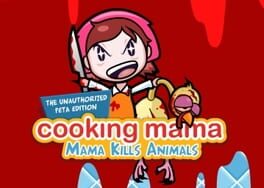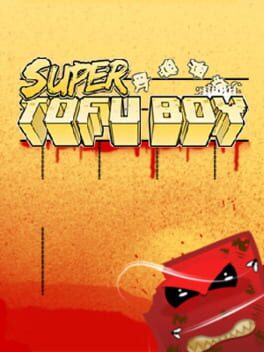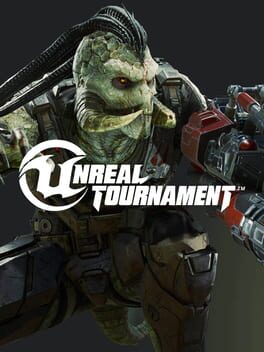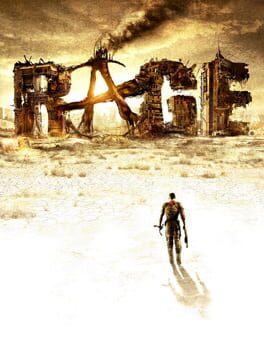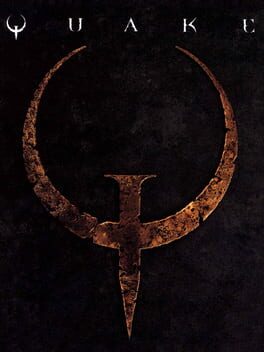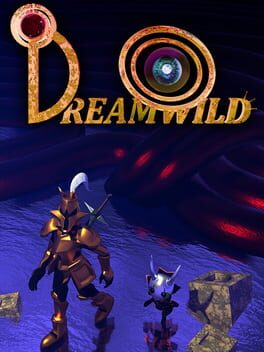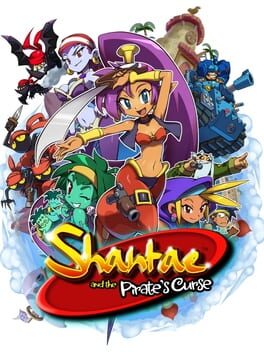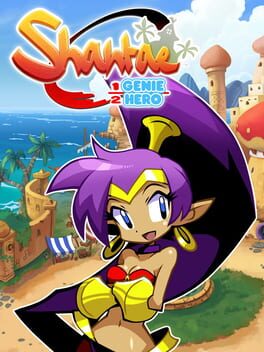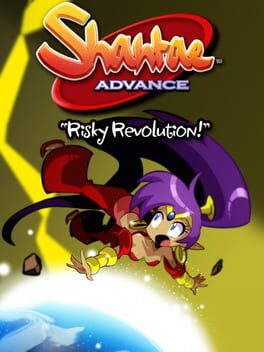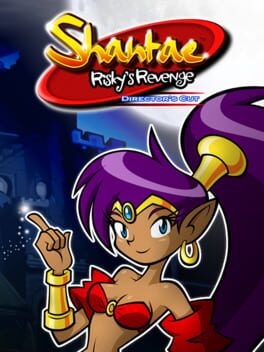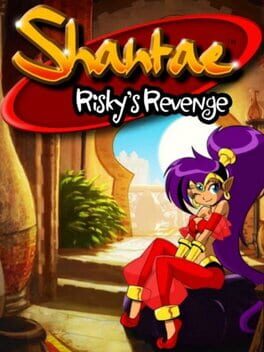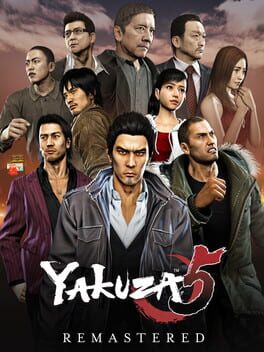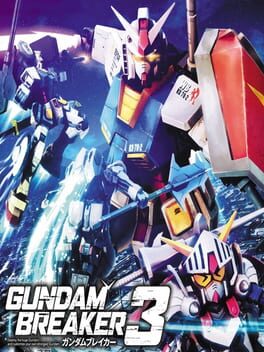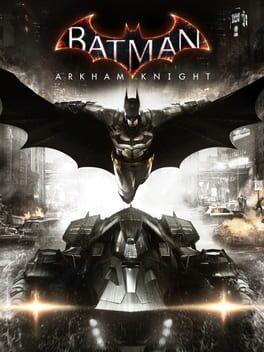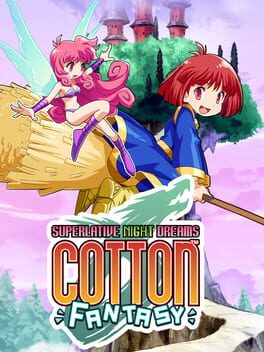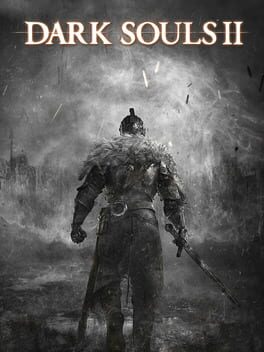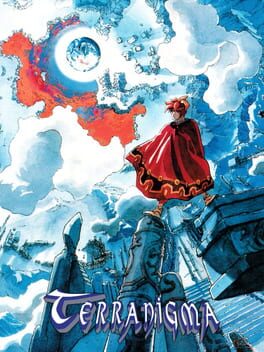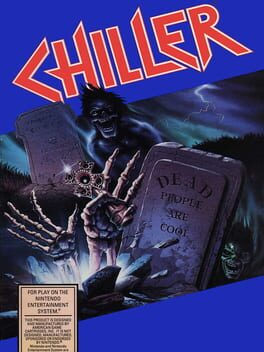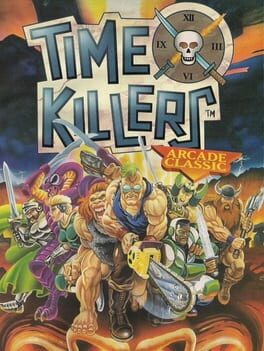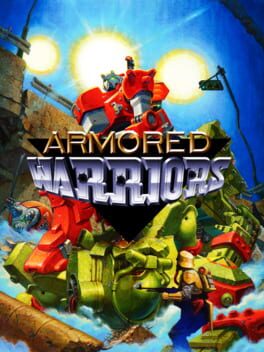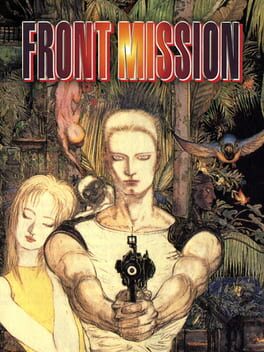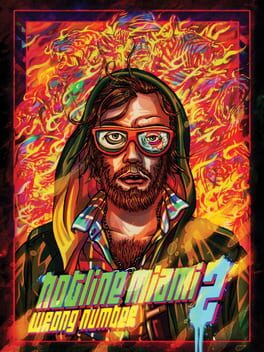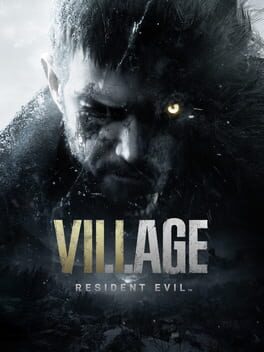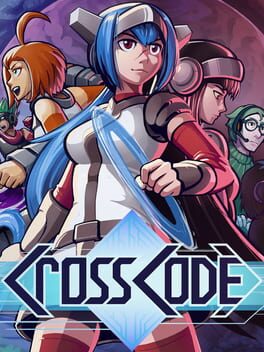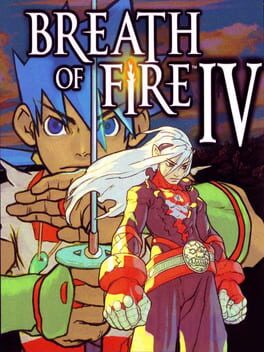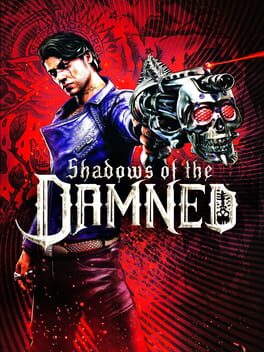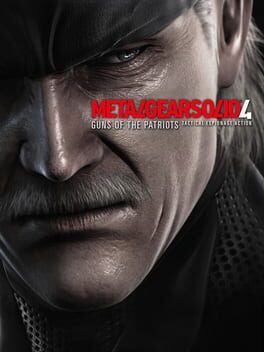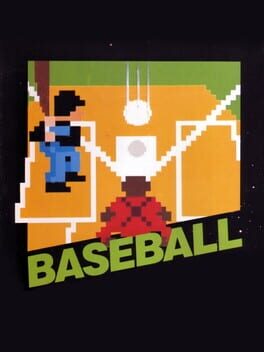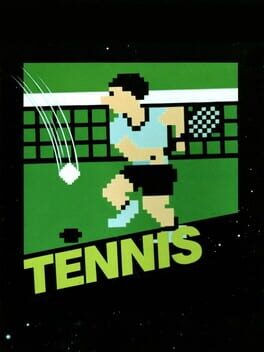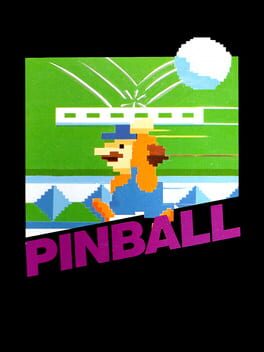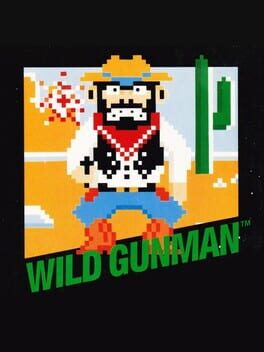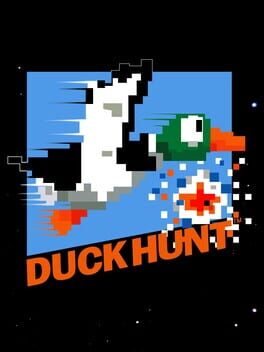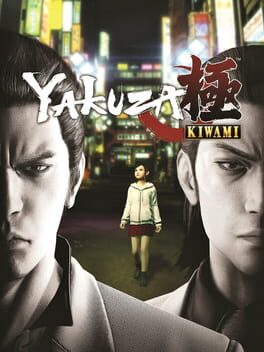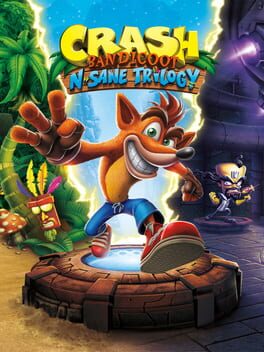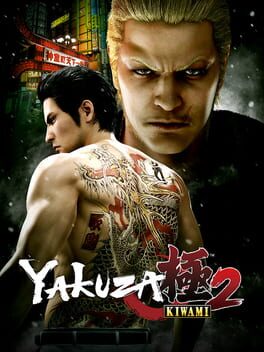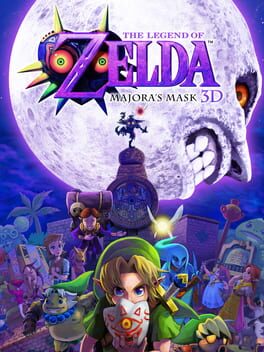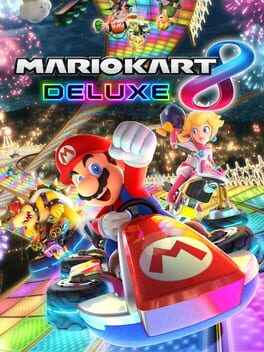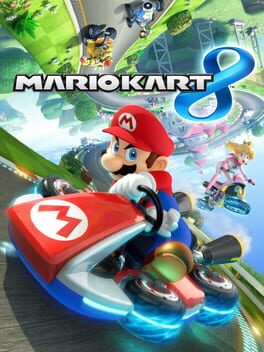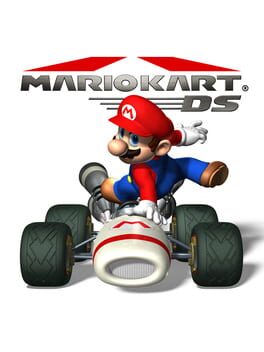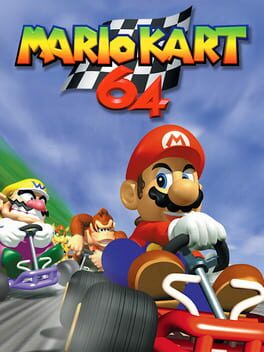317 reviews liked by beenus
Hi-Fi Rush
2023
I now have two big regrets when it comes to gaming. The first is that I have gone through life having never owned a PlayStation 2, and the second is that I didn’t support and play Tango Gameworks’ Hi-Fi Rush before the studio was unfairly axed by Microsoft in 2024. The year prior was a crazy year in terms of the amount of quality game releases, and it was quite frankly, a tad overwhelming keeping up with them all. Despite all of the praise being given to Hi-Fi Rush, there were just so many other games that were coming out, or games that I wanted to get to, that I just threw it on the backlog thinking that I’d get to it eventually. Unfortunately, 2023 was also a year with a heartbreakingly large amount of game studio closures, and this is something that is continuing in 2024, with Tango Gameworks themselves being a recent victim at the time of writing this review, despite all of the success that Hi-Fi Rush had achieved the year prior. Coincidentally, the game also had gone on sale as part of a Humble Bundle around the same time the studio was shut down, and fellow Backloggd user duhnuhnuh had an extra key for the game that they were offering (huge shoutouts to him by the way, I’m extremely grateful). Given the timing of everything and an opportunity to play the game in a way that doesn’t directly support Microsoft, I leapt at the chance to give this game its due diligence, and I was absolutely floored at how much the game truly lived up to all of the praise people had given it.
Hi-Fi Rush is a rhythm-based action game that takes place in a city in the far future. It stars Chai, a sarcastic and oblivious slacker dude with a disabled arm who really wants to become a rockstar. He volunteers for a cybernetic limb replacement program being run by Vandelay Technologies on their very own campus. Shortly before the process begins, CEO of Vandelay Technologies: Kale Vandelay, a callous CEO stereotype, observes Chai’s records. Unimpressed, he harshly dubs him a loser before he carelessly tosses Chai’s music player away, causing it to fall into the testing site onto Chai’s chest. During the limb replacement process, the music player becomes embedded within Chai, giving him electromagnetic powers while also causing his environment to sync up with the music itself. However, this causes him to be labeled as a defect by Vandelay Technologies, whose security forces attempt to bring him in. As he flees, he meets up and makes a deal with Peppermint, a robotics prodigy with a grudge against the corporation, who helps him escape in exchange for helping her investigate them. Together, the two team up to uncover the shady secrets behind the scenes of Vandely Technologies so that they can expose them to the world and stop their plans from unfolding.
The gameplay is that of a character action game like Devil May Cry and Bayonetta, but with rhythm game elements that supplement the combat and platforming. Before I played the game, I heard a lot of people comparing it to Devil May Cry, but I wrote those comparisons off as an over-exaggeration, since I feel like a lot of people will compare any action game with combat they really like to Devil May Cry. I was delightfully surprised to learn that no, the game really is essentially Devil May Cry, but with rhythm game elements. You can perform a variety of combos that are dependent on the timing of your button presses, you’ve got a stiff yet highly vertical jump, you’ve got short platforming segments to serve as variety in-between the combat, you’ve got a ton of different upgrades and additional combos you can purchase with the game’s currency, and you’re graded on your performance after every battle and level with a letter ranking system.
Everything in the game is tied to the beat of the song that’s currently playing, and I do mean everything. The attacks and movements of your enemies, platforming hazards, sound effects, and even animations in the background are all tied to the music, and the game tests you on your ability to not only perform well while in battle, but doing so while also staying on beat with the music. I did find it a bit difficult to get used to timing my attacks to the beat at first, but I got better and better at it as time went on. I can’t tell you how satisfying it feels when you’re able to successfully perform attacks in sync with the rhythm. Just like in Devil May Cry 5, the music will add additional layers of instrumentation the higher your letter score, and the game will also play the sound of an audience chanting Chai’s name as well. The better you do, the more ecstatic the game feels, and performing really well during a fight can feel genuinely euphoric.
The rhythm game elements don’t stop at syncing your attacks to the beat, however. There are a number of quicktime events where you need to press the correct buttons at the correct timing, such as during certain special attacks Chai can perform. Additionally, when close to death, more powerful enemies and certain bosses can force you into a one-on-one segment where you’ll need to successfully parry or dodge their attacks, which are telegraphed to a series of specific beats that you need to replicate with your button presses, and successfully doing so allows you to finish them off with one final strike. As someone who is a big fan of character action games, it’s extremely surprising how fresh and satisfying adding rhythm elements to this genre’s gameplay makes the game as a whole feel. This melding of the genres works fantastically. There is a great sense of cohesion between the two, and for the most part, elements of one genre don’t overshadow the other.
There’s only one element of combat that I have some small issues with. As the game progresses, you will meet additional characters who become allies that you can call upon during combat to aid you in battle. They’ll perform a special attack that has a cooldown once it’s executed. Your allies become a pretty key part of combat, as these special attacks are needed in order to make certain enemies or bosses vulnerable. The issue is how inconsistently your allies’ attacks function. You can’t manually target enemies, so when you call on your allies to use their attack, they can sometimes use it on the wrong enemy, or they’ll miss entirely. If this happens, then you’ve just wasted that summon and you now have to wait for the cooldown to finish before you can summon your ally to attack again. This was especially annoying with Macaron, who needs to use his ability twice in order to break the shields of certain enemies, and whose cooldown takes twice as long compared to your other allies. If he misses or targets the wrong enemy, then you’re basically a sitting duck until his ability recharges, which can be very frustrating. You can purchase some upgrades to make the cooldown slightly better, but they do cost a lot of currency, currency I’d rather spend on other things that can enhance the gameplay experience for myself, like additional combos I can perform, or items that increase my health or special attack gauge.
The game’s tone is very playful, upbeat, and fun, complimented by a gorgeously colorful artstyle that’s inspired by a combination of western and eastern comic books/manga. It tells a story that is a not at all discreet criticism regarding how the leaders of corporations frequently interfere with, mismanage, and ruin the lives of those who work under them. It also goes into demonstrating how much this hurts when the job is something that people have aspired to do for much of their lives, and are very passionate about. The story is extremely straightforward, but you can tell it’s one that comes from very real experiences that I’m sure the folks that have worked on the game have gone through, and considering what ended up happening with Tango Gameworks, it’s a story that resonates now more than ever.
The characters are decent, they serve the story well enough. I will say I’m not the biggest fan of Chai, but he did eventually grow on me. He’s a huge dork who’s very self-serving, unmotivated, and oblivious to those around him. He does get better as he starts to take the situation at hand more and more seriously and comes to care more about the people he meets and works with to take down Vandaley, though his ego remains pretty big still by the end of the game. He’s not at all a bad character or protagonist, he’s just a little too white bread for my tastes. The other characters don’t get much of a focus during the game’s main story, but talking to them in-between missions at the hideout allows you to learn more about them and how they feel about the unfolding events of the narrative. I think I might’ve developed a stronger attachment to them if they had a larger presence in the main plot, but this is still a fine and fun cast of characters.
While I personally would’ve preferred the tone be a bit less playful and to have had a little more edge to it, like the old school Guitar Hero games or Brutal Legend, I feel that would’ve made the game somewhat of a harder sell, not just to general audiences but to get approval to make the game in the first place. The exaggerated, Saturday morning cartoon-esque personalities of the game’s characters (the villains in particular), really manage to offset how personal, and in a way, sad the message that’s being communicated under the surface is. The villain Zanzo in particular is an excellent demonstration of this. His manically over-the-top demeanor and constant Jojo posing, to a certain degree, masks the very real, outrageous, and constant demands the person in charge of a team may have, and how their ego can get in the way of seeing the project to completion, making the efforts of the overworked people underneath them all for naught. The game’s current tone isn’t at all a bad one either. I can see some folks not jiving with the comedy, and I can also see certain people writing it off as “reddit humor”, but even if the game didn’t necessarily make me laugh out loud, I still found it to be endearing.
I’ve really enjoyed the rhythm games I’ve played, but I don’t play too many of them because the vast majority of them don’t appeal to my taste in music, so I’m really glad this game exists. I played the game with its original soundtrack instead of the licensed music (in case I decide to one day stop being a coward and start making YouTube videos), and I gotta say, it was pretty fantastic. I’m more of a metalhead than a rock guy, but this game’s music is still really good. The soundtrack has a lotta groovy riffs and decent solos that are never tiresome or boring to listen to.
Hi-Fi Rush was truly a surprise for me. I went into this without much in terms of expectations, but its fluid and immensely satisfying combat and complete banger of a soundtrack kept me hooked the entire time. I’m heavily debating doing a quick second playthrough of the game even though I’ve finished it because I was just that hooked and enamored by its gameplay. If the game had a different tone and a heavier soundtrack, I genuinely think it would’ve ended up being my dream video game, but even as it currently stands, it’s a brand new favorite of mine. The irony of a game condemning the actions of corporate dickheads becoming a massive success while the studio that made it gets shut down a year after it launches is honestly extremely tragic. It’s not like my $30 was the $30 that would’ve kept Tango Gameworks from shutting down, but I still feel really bad after finally playing this game that I didn’t purchase it and support Tango while they still existed. If you haven’t played Hi-Fi Rush, I implore you to, and I also implore you to learn from my mistake and actually support those games that don’t get AAA marketing, yet gain an outstanding reputation via word of mouth. Don’t just put them on your wishlist forever and wait. I can’t stress enough how much we need more games like Hi-Fi Rush, and if we don’t make our voices heard with our wallets, we hurt the chances of these games being made in the future.
Forever and always: Fuck You, Microsoft.
Hi-Fi Rush is a rhythm-based action game that takes place in a city in the far future. It stars Chai, a sarcastic and oblivious slacker dude with a disabled arm who really wants to become a rockstar. He volunteers for a cybernetic limb replacement program being run by Vandelay Technologies on their very own campus. Shortly before the process begins, CEO of Vandelay Technologies: Kale Vandelay, a callous CEO stereotype, observes Chai’s records. Unimpressed, he harshly dubs him a loser before he carelessly tosses Chai’s music player away, causing it to fall into the testing site onto Chai’s chest. During the limb replacement process, the music player becomes embedded within Chai, giving him electromagnetic powers while also causing his environment to sync up with the music itself. However, this causes him to be labeled as a defect by Vandelay Technologies, whose security forces attempt to bring him in. As he flees, he meets up and makes a deal with Peppermint, a robotics prodigy with a grudge against the corporation, who helps him escape in exchange for helping her investigate them. Together, the two team up to uncover the shady secrets behind the scenes of Vandely Technologies so that they can expose them to the world and stop their plans from unfolding.
The gameplay is that of a character action game like Devil May Cry and Bayonetta, but with rhythm game elements that supplement the combat and platforming. Before I played the game, I heard a lot of people comparing it to Devil May Cry, but I wrote those comparisons off as an over-exaggeration, since I feel like a lot of people will compare any action game with combat they really like to Devil May Cry. I was delightfully surprised to learn that no, the game really is essentially Devil May Cry, but with rhythm game elements. You can perform a variety of combos that are dependent on the timing of your button presses, you’ve got a stiff yet highly vertical jump, you’ve got short platforming segments to serve as variety in-between the combat, you’ve got a ton of different upgrades and additional combos you can purchase with the game’s currency, and you’re graded on your performance after every battle and level with a letter ranking system.
Everything in the game is tied to the beat of the song that’s currently playing, and I do mean everything. The attacks and movements of your enemies, platforming hazards, sound effects, and even animations in the background are all tied to the music, and the game tests you on your ability to not only perform well while in battle, but doing so while also staying on beat with the music. I did find it a bit difficult to get used to timing my attacks to the beat at first, but I got better and better at it as time went on. I can’t tell you how satisfying it feels when you’re able to successfully perform attacks in sync with the rhythm. Just like in Devil May Cry 5, the music will add additional layers of instrumentation the higher your letter score, and the game will also play the sound of an audience chanting Chai’s name as well. The better you do, the more ecstatic the game feels, and performing really well during a fight can feel genuinely euphoric.
The rhythm game elements don’t stop at syncing your attacks to the beat, however. There are a number of quicktime events where you need to press the correct buttons at the correct timing, such as during certain special attacks Chai can perform. Additionally, when close to death, more powerful enemies and certain bosses can force you into a one-on-one segment where you’ll need to successfully parry or dodge their attacks, which are telegraphed to a series of specific beats that you need to replicate with your button presses, and successfully doing so allows you to finish them off with one final strike. As someone who is a big fan of character action games, it’s extremely surprising how fresh and satisfying adding rhythm elements to this genre’s gameplay makes the game as a whole feel. This melding of the genres works fantastically. There is a great sense of cohesion between the two, and for the most part, elements of one genre don’t overshadow the other.
There’s only one element of combat that I have some small issues with. As the game progresses, you will meet additional characters who become allies that you can call upon during combat to aid you in battle. They’ll perform a special attack that has a cooldown once it’s executed. Your allies become a pretty key part of combat, as these special attacks are needed in order to make certain enemies or bosses vulnerable. The issue is how inconsistently your allies’ attacks function. You can’t manually target enemies, so when you call on your allies to use their attack, they can sometimes use it on the wrong enemy, or they’ll miss entirely. If this happens, then you’ve just wasted that summon and you now have to wait for the cooldown to finish before you can summon your ally to attack again. This was especially annoying with Macaron, who needs to use his ability twice in order to break the shields of certain enemies, and whose cooldown takes twice as long compared to your other allies. If he misses or targets the wrong enemy, then you’re basically a sitting duck until his ability recharges, which can be very frustrating. You can purchase some upgrades to make the cooldown slightly better, but they do cost a lot of currency, currency I’d rather spend on other things that can enhance the gameplay experience for myself, like additional combos I can perform, or items that increase my health or special attack gauge.
The game’s tone is very playful, upbeat, and fun, complimented by a gorgeously colorful artstyle that’s inspired by a combination of western and eastern comic books/manga. It tells a story that is a not at all discreet criticism regarding how the leaders of corporations frequently interfere with, mismanage, and ruin the lives of those who work under them. It also goes into demonstrating how much this hurts when the job is something that people have aspired to do for much of their lives, and are very passionate about. The story is extremely straightforward, but you can tell it’s one that comes from very real experiences that I’m sure the folks that have worked on the game have gone through, and considering what ended up happening with Tango Gameworks, it’s a story that resonates now more than ever.
The characters are decent, they serve the story well enough. I will say I’m not the biggest fan of Chai, but he did eventually grow on me. He’s a huge dork who’s very self-serving, unmotivated, and oblivious to those around him. He does get better as he starts to take the situation at hand more and more seriously and comes to care more about the people he meets and works with to take down Vandaley, though his ego remains pretty big still by the end of the game. He’s not at all a bad character or protagonist, he’s just a little too white bread for my tastes. The other characters don’t get much of a focus during the game’s main story, but talking to them in-between missions at the hideout allows you to learn more about them and how they feel about the unfolding events of the narrative. I think I might’ve developed a stronger attachment to them if they had a larger presence in the main plot, but this is still a fine and fun cast of characters.
While I personally would’ve preferred the tone be a bit less playful and to have had a little more edge to it, like the old school Guitar Hero games or Brutal Legend, I feel that would’ve made the game somewhat of a harder sell, not just to general audiences but to get approval to make the game in the first place. The exaggerated, Saturday morning cartoon-esque personalities of the game’s characters (the villains in particular), really manage to offset how personal, and in a way, sad the message that’s being communicated under the surface is. The villain Zanzo in particular is an excellent demonstration of this. His manically over-the-top demeanor and constant Jojo posing, to a certain degree, masks the very real, outrageous, and constant demands the person in charge of a team may have, and how their ego can get in the way of seeing the project to completion, making the efforts of the overworked people underneath them all for naught. The game’s current tone isn’t at all a bad one either. I can see some folks not jiving with the comedy, and I can also see certain people writing it off as “reddit humor”, but even if the game didn’t necessarily make me laugh out loud, I still found it to be endearing.
I’ve really enjoyed the rhythm games I’ve played, but I don’t play too many of them because the vast majority of them don’t appeal to my taste in music, so I’m really glad this game exists. I played the game with its original soundtrack instead of the licensed music (in case I decide to one day stop being a coward and start making YouTube videos), and I gotta say, it was pretty fantastic. I’m more of a metalhead than a rock guy, but this game’s music is still really good. The soundtrack has a lotta groovy riffs and decent solos that are never tiresome or boring to listen to.
Hi-Fi Rush was truly a surprise for me. I went into this without much in terms of expectations, but its fluid and immensely satisfying combat and complete banger of a soundtrack kept me hooked the entire time. I’m heavily debating doing a quick second playthrough of the game even though I’ve finished it because I was just that hooked and enamored by its gameplay. If the game had a different tone and a heavier soundtrack, I genuinely think it would’ve ended up being my dream video game, but even as it currently stands, it’s a brand new favorite of mine. The irony of a game condemning the actions of corporate dickheads becoming a massive success while the studio that made it gets shut down a year after it launches is honestly extremely tragic. It’s not like my $30 was the $30 that would’ve kept Tango Gameworks from shutting down, but I still feel really bad after finally playing this game that I didn’t purchase it and support Tango while they still existed. If you haven’t played Hi-Fi Rush, I implore you to, and I also implore you to learn from my mistake and actually support those games that don’t get AAA marketing, yet gain an outstanding reputation via word of mouth. Don’t just put them on your wishlist forever and wait. I can’t stress enough how much we need more games like Hi-Fi Rush, and if we don’t make our voices heard with our wallets, we hurt the chances of these games being made in the future.
Forever and always: Fuck You, Microsoft.
Wii Play: Motion
2011
This is Wii Play's equivalent of what Wii Sports Resort was to Wii Sports. I'm sure I would've played this ALL THE TIME if I had it during the Wii era, because the minigames here are considerably more fleshed out than the Wii Play ones and they all have variations or sidemodes, unlike the original.
Also I spent almost 3 hours on Teeter Targets because of the last 4 stages, especially 29 and 30, of which the latter I didn't even manage to beat. The amount of precision you need is out of this world, screw that shit. If one day I manage to clear that it'll be my proudest GAMER MOMENT.
Also I spent almost 3 hours on Teeter Targets because of the last 4 stages, especially 29 and 30, of which the latter I didn't even manage to beat. The amount of precision you need is out of this world, screw that shit. If one day I manage to clear that it'll be my proudest GAMER MOMENT.
Me and my sister used to play this, not knowing that it was a PETA game. It was fun, at least at the time.
I think this is worth a playthrough for it's sheer bizarreness alone. Yes, it's bad, but it's one of those funny kind of bad games. The controls suck, but the minigames are really short. The graphics are your typical PETA shit. Uhhhh... the ending was funny? IDK. It's not a very long game; it took about 5 minutes to play. As someone who's played some of the earliest Newgrounds shit though, I wasn't phased in the slightest. Sorry, PETA! Try harder next time.
I think this is worth a playthrough for it's sheer bizarreness alone. Yes, it's bad, but it's one of those funny kind of bad games. The controls suck, but the minigames are really short. The graphics are your typical PETA shit. Uhhhh... the ending was funny? IDK. It's not a very long game; it took about 5 minutes to play. As someone who's played some of the earliest Newgrounds shit though, I wasn't phased in the slightest. Sorry, PETA! Try harder next time.
Super Tofu Boy
2010
Back to back on the PETA attack!
Hey, it beats Super Meat Boy Forever in terms of design! Aaaaand it's still one of the worst games I've ever played. Genuinely. It's not even funny bad. It's just BAD. McCardiarrac Arrest aside, this is absolutely abhorrent. Bad controls, abysmal graphics, terrible level design, I mean, shit! I could at least laugh at Cooking Mama Kills The Animals's graphics, but THIS is just blood and gore shat straight out of someone's ass. I rage quit eventually because the controls were simply THAT awful and unfun. Isn't this designed for kids???
What a joke.
Hey, it beats Super Meat Boy Forever in terms of design! Aaaaand it's still one of the worst games I've ever played. Genuinely. It's not even funny bad. It's just BAD. McCardiarrac Arrest aside, this is absolutely abhorrent. Bad controls, abysmal graphics, terrible level design, I mean, shit! I could at least laugh at Cooking Mama Kills The Animals's graphics, but THIS is just blood and gore shat straight out of someone's ass. I rage quit eventually because the controls were simply THAT awful and unfun. Isn't this designed for kids???
What a joke.
Unreal Tournament
2014
Rage
2011
Rage
2011
Quake
1996
It’s honestly kind of insane how good this game is. Quake is one of the literal first ever fully 3D first-person shooters, and in spite of its age, it’s still significantly more fun than 90% of the genre today. This is due to an excellent core design philosophy, strong level and enemy design, a solid offensive toolkit, and a surprisingly thorough grasp of atmosphere.
Quake is different to most modern shooters in that, rather than emphasizing cover mechanics and hitscan aiming, it instead emphasizes complex movement, positioning, pattern reading, and projectile mechanics. This means that you’re constantly moving and applying skills beyond “aim and shoot”, and the way the game layers its mechanics together and explores them through its level and enemy design is nothing short of brilliant.
Outside the first level of each of its four “episodes”, Quake very rarely employs hitscan enemies, meaning nearly every enemy’s attacks can be reliably dodged with the right movement. However, this doesn’t mean that avoiding damage is easy - flying enemies like Scrags can shoot pretty fast-moving projectiles, Fiends are tanky and will aggressively leap at you repeatedly, Death Knights chase you down relentlessly and are a constant threat, and Ogres force you to move sideways relative to them and to keep track of their grenades as they bounce around.
Those Ogres are one of my favorite enemies in the whole genre - the way their grenades bounce is chaotic but deterministic, and as a result, predicting their trajectory becomes a worthwhile skill. It’s especially worthwhile in encounters with multiple Ogres, which can quickly become a serious threat as they flood the arena with bouncing grenades.
Of course, not every enemy can be a winner. The Shambler is pretty boring to fight - whenever you’re not in melee range of it, it can start up a fully hitscan lightning bolt attack, meaning you either need to repeatedly bait its melee attacks or repeatedly duck behind cover and take potshots intermittently. It’s a pretty straightforward and repetitive strategy, but these guys have so much health (especially on the higher difficulties) that fighting them can really start to drag. Fortunately, they don’t show up more than once or twice per level until episode 4.
Sadly, the game takes a bit of a nosedive in quality a couple levels into episode 4. In addition to more Shamblers, it more or less stops using Ogres, the best enemy in the game, and it introduces two new enemy types called the Spawn and the Vore. Spawns are okay in small numbers, but they’ll incessantly jump at you and explode when killed, and in large numbers, which you’ll often encounter in the later levels of episode 4, you’re pretty much guaranteed to take a huge chunk of damage if you don’t kill them on sight. This means if you don’t memorize their placement, you’re going to die a lot, and if you do, they stop being a threat. I don’t find them very interesting to fight.
The Vore is a weirder case. These things can be fine in the right arena; they fire a homing projectile that can curve somewhat around walls to continue pursuing you. This more or less forces a specific movement pattern in order to dodge it in arenas that don’t have terrain that’s safe to hide behind. Unfortunately, most of the time they’re encountered down a long hallway or in an open room, which means that avoiding their projectiles becomes a matter of running in a circle or repeatedly running back down the hallway to block it using a larger wall.
Despite these issues, episode 4 still has a lot of really interesting level layouts. Quake and its contemporaries are different to most modern shooters in that their levels are often labyrinthine, highly vertical mazes with keys, doors, and secrets to discover. In addition to being interesting to explore and navigate, the excellent level design on display enhances the combat, because it enables you to utilize your quick movement to reposition quickly and take advantage of terrain structures which are often fairly complex. Good tactics and level knowledge can allow you to block line of sight with dangerous enemies, lure more aggressive enemies into another room, force multiple enemies into a chokepoint before destroying them all with an explosive, and much, much more. This excellent level design goes hand in hand with the great weapon roster.
Quake’s weapons include a shotgun, a nailgun, enhanced versions of those two which deal additional damage at the cost of more ammo, a rocket launcher, a grenade launcher, a lightning gun, and a shitty axe that’s almost useless and which can safely be disregarded. The shotguns and lightning gun are the only hitscan weapons in the game, and the shotguns deal fairly little damage while the lightning gun has heavily limited ammo and range. The nailgun, rocket launcher, and grenade launcher all require not only aim but assessment of projectile travel time. The rocket and grenade launcher deal heavy damage in an area but can damage you as well if you’re too close to the explosion, and have the longest travel time; this means that they’re difficult to use, but highly rewarding in the hands of a skilled player. The limited ammo and the fact that most episodes don’t give you the stronger weapons immediately help keep all of the weapons relevant, and I found myself switching between them regularly even towards the end of the game.
The level design often feels built around making it as difficult as possible to safely use explosives, which makes it all the more satisfying to use them effectively. I played on Hard, and my playstyle in the later parts of each episode often consisted of finding the safest way to use the rocket launcher, which was made far more challenging by the often claustrophobic levels and the dangerous and aggressive melee enemies. The explosives also enable advanced techniques like grenade and rocket jumping, which open up a huge number of routing and traversal possibilities for skilled players at the cost of some health.
The atmosphere of the game is also excellent - the soundtrack written by Trent Reznor and performed by Nine Inch Nails, combined with some great sound design, lend a suitably unsettling tone to each level. The Lovecraft-inspired story is fairly thin but mostly effective, and serves as a solid backdrop for the game, which mostly thrives on its gameplay and delightfully creepy aesthetics.
I do have a few stray complaints - for a start, I think the game could really use a proper checkpoint system. The quicksave system as it exists is a bit too freeform and can easily lead to save-scumming, but ignoring it entirely can make some of the longer levels extremely frustrating on a blind playthrough. Some kind of autosave would go a long way towards alleviating this irritation. Moreover, the game features a couple bosses, but they’re really nothing to write home about, and mostly consist of making your way to a specific part of their arena, which is kind of underwhelming in its failure to test your shooting skills. The Nightmare difficulty in the original version is actually considered by many experienced players to be easier than the Hard difficulty due to its enemies’ tendency to stand in one spot and fire constantly, making them more predictable. Fortunately, this is remedied in the enhanced remaster.
Despite my few complaints, Quake is a very solid game overall. The first three episodes more than make up for the disappointment of the fourth, and even if you stop before E4M4 (which is where I found the game to start getting really unenjoyable) the game still provides plenty of excellent levels to sink your teeth into. If you couldn’t tell already, I strongly recommend playing this game, not only to experience a seminal piece of first-person shooter history, but also on its own merits as one of the genre’s best entries to this day
Quake is different to most modern shooters in that, rather than emphasizing cover mechanics and hitscan aiming, it instead emphasizes complex movement, positioning, pattern reading, and projectile mechanics. This means that you’re constantly moving and applying skills beyond “aim and shoot”, and the way the game layers its mechanics together and explores them through its level and enemy design is nothing short of brilliant.
Outside the first level of each of its four “episodes”, Quake very rarely employs hitscan enemies, meaning nearly every enemy’s attacks can be reliably dodged with the right movement. However, this doesn’t mean that avoiding damage is easy - flying enemies like Scrags can shoot pretty fast-moving projectiles, Fiends are tanky and will aggressively leap at you repeatedly, Death Knights chase you down relentlessly and are a constant threat, and Ogres force you to move sideways relative to them and to keep track of their grenades as they bounce around.
Those Ogres are one of my favorite enemies in the whole genre - the way their grenades bounce is chaotic but deterministic, and as a result, predicting their trajectory becomes a worthwhile skill. It’s especially worthwhile in encounters with multiple Ogres, which can quickly become a serious threat as they flood the arena with bouncing grenades.
Of course, not every enemy can be a winner. The Shambler is pretty boring to fight - whenever you’re not in melee range of it, it can start up a fully hitscan lightning bolt attack, meaning you either need to repeatedly bait its melee attacks or repeatedly duck behind cover and take potshots intermittently. It’s a pretty straightforward and repetitive strategy, but these guys have so much health (especially on the higher difficulties) that fighting them can really start to drag. Fortunately, they don’t show up more than once or twice per level until episode 4.
Sadly, the game takes a bit of a nosedive in quality a couple levels into episode 4. In addition to more Shamblers, it more or less stops using Ogres, the best enemy in the game, and it introduces two new enemy types called the Spawn and the Vore. Spawns are okay in small numbers, but they’ll incessantly jump at you and explode when killed, and in large numbers, which you’ll often encounter in the later levels of episode 4, you’re pretty much guaranteed to take a huge chunk of damage if you don’t kill them on sight. This means if you don’t memorize their placement, you’re going to die a lot, and if you do, they stop being a threat. I don’t find them very interesting to fight.
The Vore is a weirder case. These things can be fine in the right arena; they fire a homing projectile that can curve somewhat around walls to continue pursuing you. This more or less forces a specific movement pattern in order to dodge it in arenas that don’t have terrain that’s safe to hide behind. Unfortunately, most of the time they’re encountered down a long hallway or in an open room, which means that avoiding their projectiles becomes a matter of running in a circle or repeatedly running back down the hallway to block it using a larger wall.
Despite these issues, episode 4 still has a lot of really interesting level layouts. Quake and its contemporaries are different to most modern shooters in that their levels are often labyrinthine, highly vertical mazes with keys, doors, and secrets to discover. In addition to being interesting to explore and navigate, the excellent level design on display enhances the combat, because it enables you to utilize your quick movement to reposition quickly and take advantage of terrain structures which are often fairly complex. Good tactics and level knowledge can allow you to block line of sight with dangerous enemies, lure more aggressive enemies into another room, force multiple enemies into a chokepoint before destroying them all with an explosive, and much, much more. This excellent level design goes hand in hand with the great weapon roster.
Quake’s weapons include a shotgun, a nailgun, enhanced versions of those two which deal additional damage at the cost of more ammo, a rocket launcher, a grenade launcher, a lightning gun, and a shitty axe that’s almost useless and which can safely be disregarded. The shotguns and lightning gun are the only hitscan weapons in the game, and the shotguns deal fairly little damage while the lightning gun has heavily limited ammo and range. The nailgun, rocket launcher, and grenade launcher all require not only aim but assessment of projectile travel time. The rocket and grenade launcher deal heavy damage in an area but can damage you as well if you’re too close to the explosion, and have the longest travel time; this means that they’re difficult to use, but highly rewarding in the hands of a skilled player. The limited ammo and the fact that most episodes don’t give you the stronger weapons immediately help keep all of the weapons relevant, and I found myself switching between them regularly even towards the end of the game.
The level design often feels built around making it as difficult as possible to safely use explosives, which makes it all the more satisfying to use them effectively. I played on Hard, and my playstyle in the later parts of each episode often consisted of finding the safest way to use the rocket launcher, which was made far more challenging by the often claustrophobic levels and the dangerous and aggressive melee enemies. The explosives also enable advanced techniques like grenade and rocket jumping, which open up a huge number of routing and traversal possibilities for skilled players at the cost of some health.
The atmosphere of the game is also excellent - the soundtrack written by Trent Reznor and performed by Nine Inch Nails, combined with some great sound design, lend a suitably unsettling tone to each level. The Lovecraft-inspired story is fairly thin but mostly effective, and serves as a solid backdrop for the game, which mostly thrives on its gameplay and delightfully creepy aesthetics.
I do have a few stray complaints - for a start, I think the game could really use a proper checkpoint system. The quicksave system as it exists is a bit too freeform and can easily lead to save-scumming, but ignoring it entirely can make some of the longer levels extremely frustrating on a blind playthrough. Some kind of autosave would go a long way towards alleviating this irritation. Moreover, the game features a couple bosses, but they’re really nothing to write home about, and mostly consist of making your way to a specific part of their arena, which is kind of underwhelming in its failure to test your shooting skills. The Nightmare difficulty in the original version is actually considered by many experienced players to be easier than the Hard difficulty due to its enemies’ tendency to stand in one spot and fire constantly, making them more predictable. Fortunately, this is remedied in the enhanced remaster.
Despite my few complaints, Quake is a very solid game overall. The first three episodes more than make up for the disappointment of the fourth, and even if you stop before E4M4 (which is where I found the game to start getting really unenjoyable) the game still provides plenty of excellent levels to sink your teeth into. If you couldn’t tell already, I strongly recommend playing this game, not only to experience a seminal piece of first-person shooter history, but also on its own merits as one of the genre’s best entries to this day
Dreamwild
2022
Dreamwild
2022
Aesthetically a treat, but the game surrounding it is frustrating.
The weapon feels bad to use and the fact that you lose your projectile unless you're at full health is obnoxious. First person melee almost always feels awful and in a game like this where you're encouraged to strafehop and build up speed it feels awful having to stop to fight enemies at close range, especially since your melee range is pitiful and almost guarantees you'll get hit in the process of trying to melee most enemies. When you actually DO have full health you basically can't afford to be looking forward since you constantly have enemies right behind you that you need to shoot, so you end up running into terrain and taking damage, or you face forward and end up taking damage from an enemy you can't see.
If you manage to live long enough to get to a safe area you can upgrade your character and regain health but the portal to the safe area spawns at random. I had one run where two portals were right next to each other, and another run where I was running around for 5+ minutes with ZERO portal spawns. It seems the game's areas are procedurally generated, which I don't think added to the game at all since the variance is so little for each area.
The other areas were great visually and I liked the new creature designs I encountered, but since most of my runs ended after 5-10 minutes in the first area I lost desire to see the rest of the game.
The weapon feels bad to use and the fact that you lose your projectile unless you're at full health is obnoxious. First person melee almost always feels awful and in a game like this where you're encouraged to strafehop and build up speed it feels awful having to stop to fight enemies at close range, especially since your melee range is pitiful and almost guarantees you'll get hit in the process of trying to melee most enemies. When you actually DO have full health you basically can't afford to be looking forward since you constantly have enemies right behind you that you need to shoot, so you end up running into terrain and taking damage, or you face forward and end up taking damage from an enemy you can't see.
If you manage to live long enough to get to a safe area you can upgrade your character and regain health but the portal to the safe area spawns at random. I had one run where two portals were right next to each other, and another run where I was running around for 5+ minutes with ZERO portal spawns. It seems the game's areas are procedurally generated, which I don't think added to the game at all since the variance is so little for each area.
The other areas were great visually and I liked the new creature designs I encountered, but since most of my runs ended after 5-10 minutes in the first area I lost desire to see the rest of the game.
11 lists liked by beenus
by zeusdeegoose |
6 Games
by Rowl_ |
10 Games
by Weatherby |
95 Games
by hilda |
30 Games
by chandler |
58 Games
by Phantasm |
8 Games
by Mewtsukki |
34 Games
by ToastmanJack |
672 Games
by chandler |
48 Games
by NOWITSREYNTIME17 |
8 Games


